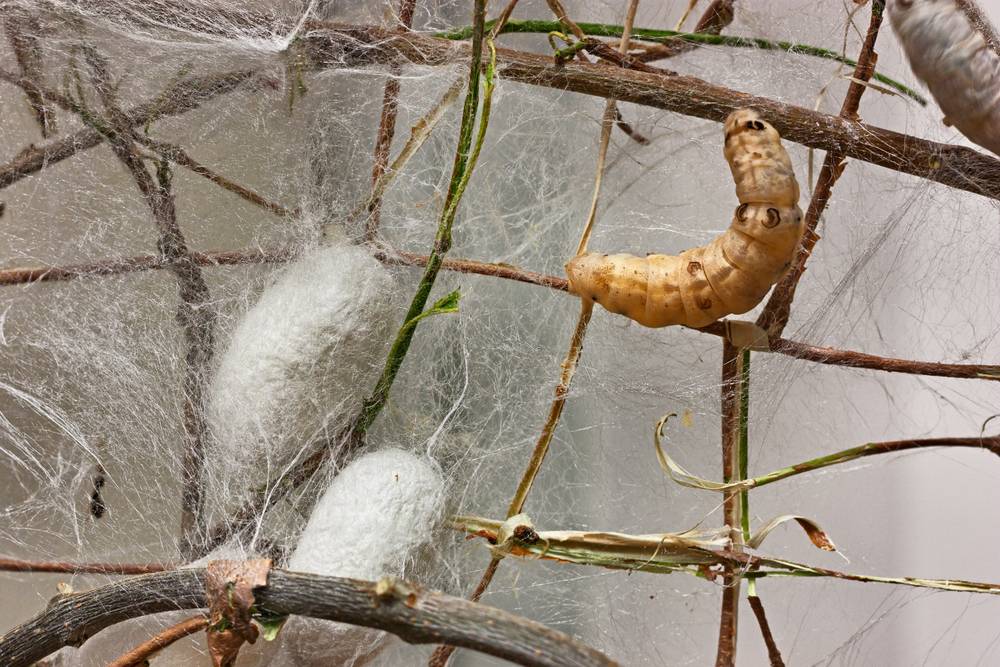 Last updated: December 17th, 2019 4:41 PM
Last updated: December 17th, 2019 4:41 PM
Silk Samagra
The scheme “Silk Samagra” is initiated by The Central Silk Board. The Central Silk Board carries out the commercial seed production, extension and technology, Quality Certification systems, capacity building. Also facilitates in implementation of developmental programs through its nested units that are located in the different states of India in coordination with State Sericulture Departments which emphasis Silk Samagra. This scheme is an integrated scheme for enhancing the Silk industry which has been able to maintain and strengthen the Sericulture activities in the Country.Components of the Scheme
The four components of Silk Samagra are:- Research and development, Training, Transfer of Technology and I.T. initiatives
- Seed Organizations
- Coordination and Market Development
- Quality Certification Systems/Export Brand Promotion and Technology up-gradation
Objectives of Silk Samagra
- Research and Development (R&D) activities are undertaken for developing and improvising food plants, silkworm breeds, and silkworm seed production techniques and improve the practices for silkworm rearing.
- Post cocoon operations are carried out for developing the utilization of post cocoon technologies.
- Four-tier seed multiplication network is maintained for the supply of nucleus and basic seeds to own state need production units.
- Quality certification to be given for the State and private units.
- All types of technical support are provided for the State seed production units.
- Silk production is analysed on a statistical basis for import and export market development.
- Price stabilization is made for Muga cocoons through raw materials, and financial managements of CSB units.
- Ensures the quality and purity of silk which is used for trading and promotion is made for pure silk products through silk mark.
Highlights of Silk Samagra
- Emphasis and increase the research on sericulture.
- Promotions are made to expand the horizontal expansion of Sericulture in non-traditional areas which includes the North East through the Cluster approach.
- Soil testing and other issues of Soil Health card are promoted to the beneficiaries.
- Organic farming methods and eco-friendly silk which is known as Vanya Silk are promoted.
- All the necessary critical input support is provided.
- Productivity and quality improvement are made.
- Silkworm products (pupa) are used in poultry feed, cosmetic application, and used as product diversification which is woven into fabrics, silk denim, silk knit, etc.
- Private sectors are encouraged to join in with seed production up-gradation to obtain the raw silk production target.
- Single window-based SILKS (Sericulture Information Linked Knowledge System) will be extended to cover more districts for more expansion of sericulture.
- Sericulture Database is developed for clear understanding and planning.
The Outcome from the Silk Samagra Scheme
- Increase in Silk production
- Mulberry silk production increase to be expected to 27,000 MTs which includes Bivoltine silk to 8,500 Mts.
- Increase in Employment
- Improved varieties of mulberry saplings to be developed in 543 kissan nurseries to cover up the new plantation methods.
- Quality and Quantity of the cocoon to be enhanced with 131 new Chawki rearing centres.
- More efficient and quality silk production to be facilitated for improving the working conditions in reeling machines.
- Silkworm seed production centres and seed farms to be strengthened to enhance the silkworm seed production by 2020.
Silkworm Seed Organisations
- Seed production units to be equipped to bring in more quality in the production of seeds. This will also impact the production capacity of the silk production target.
- Enhances large scale private participation in seed production to demand in the growth of seed production.
Approval and realising Funds
- Every State project proposals will be approved by each State level Project Monitoring Committee to make recommendations for project approval.
- Project proposals will be submitted by all the States before June 30th, each year.
- All the required documents and the scheme criteria should be submitted by the States, which will be scrutinized by the CSB.
- CSB will release funds to all the State through the public Finance Management system and Direct Benefit Transfer.
Funds released for each component sectors
- Single-phase HP electric motor -- Rs.25000
- Cottage basin and Domestic basin -- Rs.1.99 lakh.
- Multi-end reeling units -- Rs.17.09 lakh.
- Automatic reeling units -- Rs.79.83 lakh and Rs.141.02 lakh
- Automatic dupion reeling units (international quality) -- Rs.45.76 lakh
- Twisting units -- Rs.10.04 lakh per unit
- Eco de-gumming machine (sericin powder) -- Rs.10 lakh.
- Pupae processing units -- Rs.20.82 lakh per unit.
- Reeling cum-twisting machines -- Rs.28,000
- Wet reeling machines -- Rs.30,000.
- Pedal/motorized spinning machines -- Rs.7000 per unit.
- Solar spinning machines -- Rs.21000
- Computerized Aided Textile Designing units -- Rs.5.75 lakh.
- The Fabric processing unit (250 kg) -- Rs.31.50 lakh per unit.
- Arm dyeing unit -- Rs.21 lakh.
- Fabric finishing units -- Rs.9 lakh per unit.
Funds for Seed organization
- Fund for state Grainages -- Rs.18 per unit of a single component.
- Seed testing equipment -- Rs.16 lakh per Grainage.
- Seed production units and Cold storage -- Rs.4.476 crore per Grainage.
Popular Post

In the digital age, the convenience of accessing important documents online has become a necessity...

The Atalji Janasnehi Kendra Project that has been launched by the Government of Karnataka...

The Indian Divorce Act governs divorce among the Christian couples in India. Divorce...

When an individual has more than a single PAN card, it may lead to that person being heavily penalised, or worse,...

Employees Provident Fund (PF) is social security and savings scheme for employee in India. Employers engaged...


